What is Chicken Katsu?
Katsu (カツ) is a Japanese dish consisting of a cut of meat rolled in breadcrumbs and deep-fried. The term “katsu” means “cutlet” in Japanese. The dish originated from Europe, and many countries around the world have their own versions of it, such as the German “schnitzel,” the French “escalope,” or the Spanish “filete empanado.”
In Japan, several types of katsu are commonly served. The most popular type is Tonkatsu, which is made with pork chops. Chicken katsu, on the other hand, can be made with either chicken breast or chicken thigh, with the latter being juicier and more succulent. Finally, Gyukatsu is a beef cutlet often made with sirloin and cooked rare or medium.
In Japan, if the type of katsu is not specified, it usually means pork by default. However, many other variations of katsu are worth trying!

Visual Walkthrough & Tips
Here are my step-by-step instructions for how to make The Ultimate Chicken Katsu at home. For ingredient quantities and simplified instructions, scroll down for the Printable Recipe Card below.
In a dry frying pan over medium-high heat, roast 15 g of white sesame seeds for a few minutes until they become fragrant. Keep them moving to avoid burning.
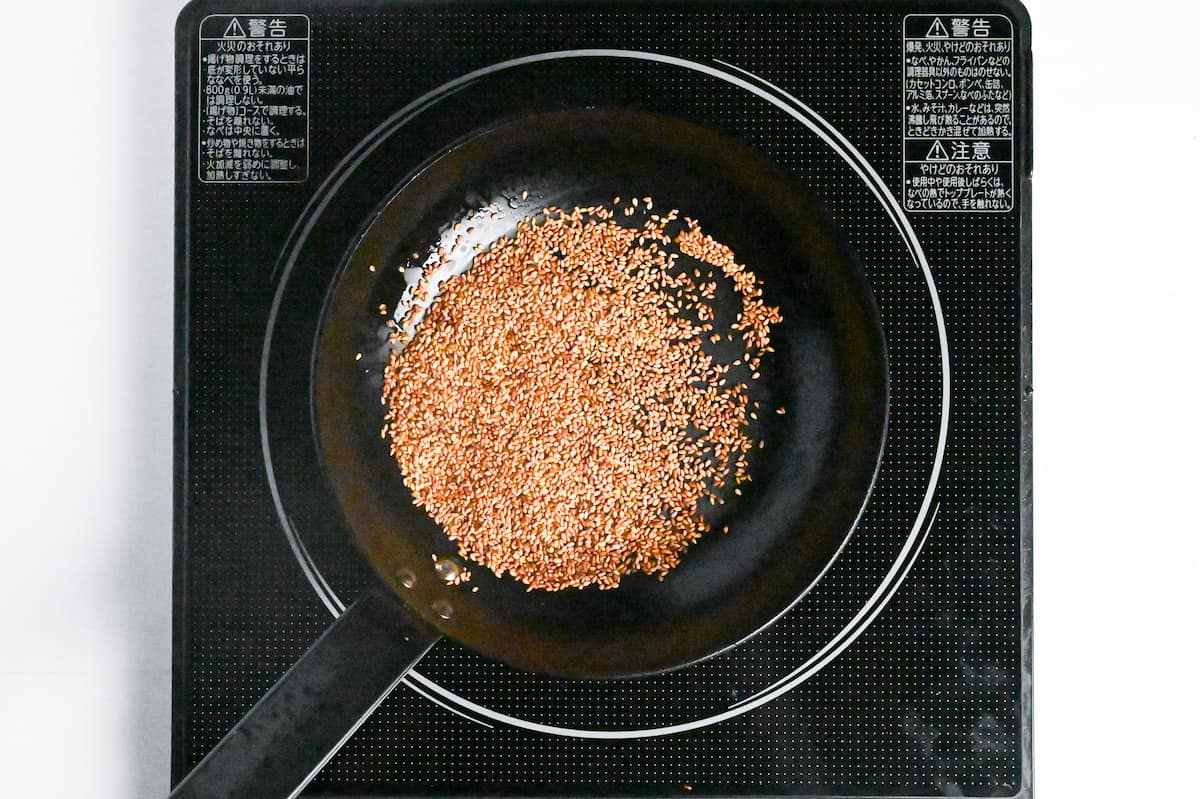
Once roasted, transfer the sesame seeds to a mortar and pestle and grind them until fine.
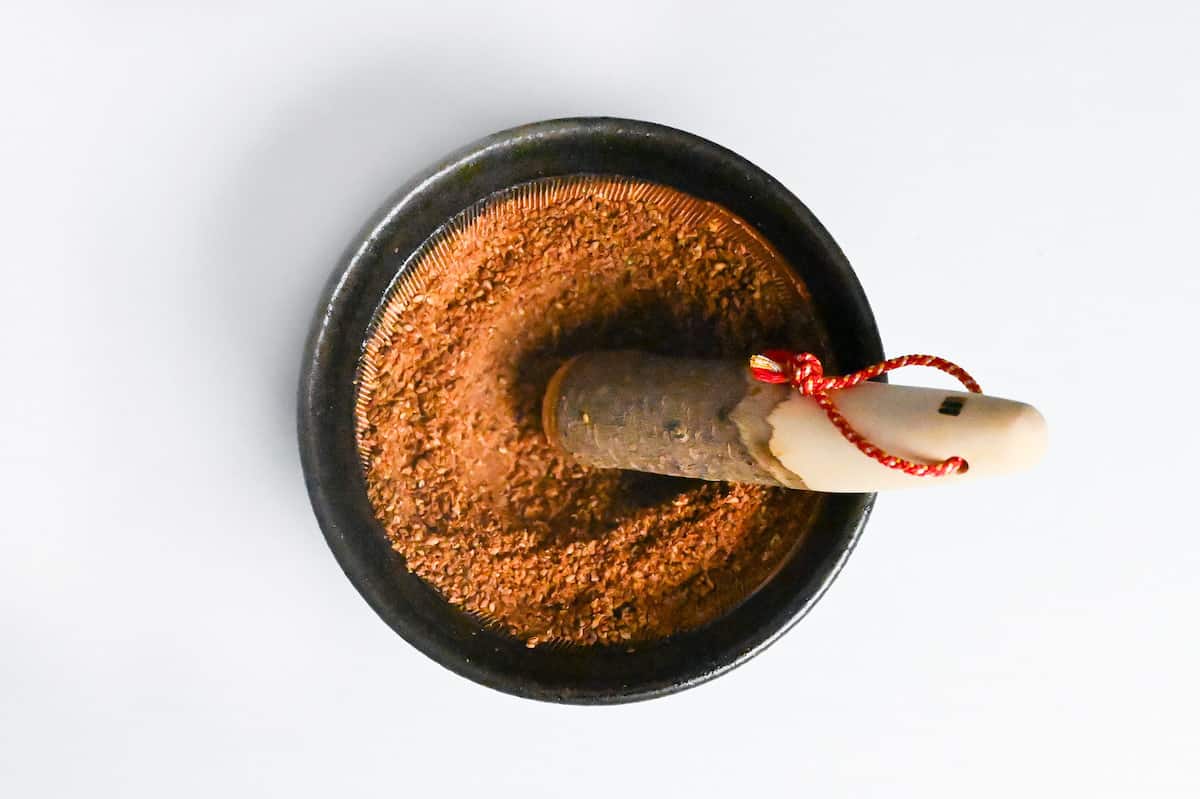
Transfer the ground sesame into a bowl. Add soy sauce, Worcestershire sauce, tomato ketchup, sugar, and water. Stir the mixture until everything is well incorporated.
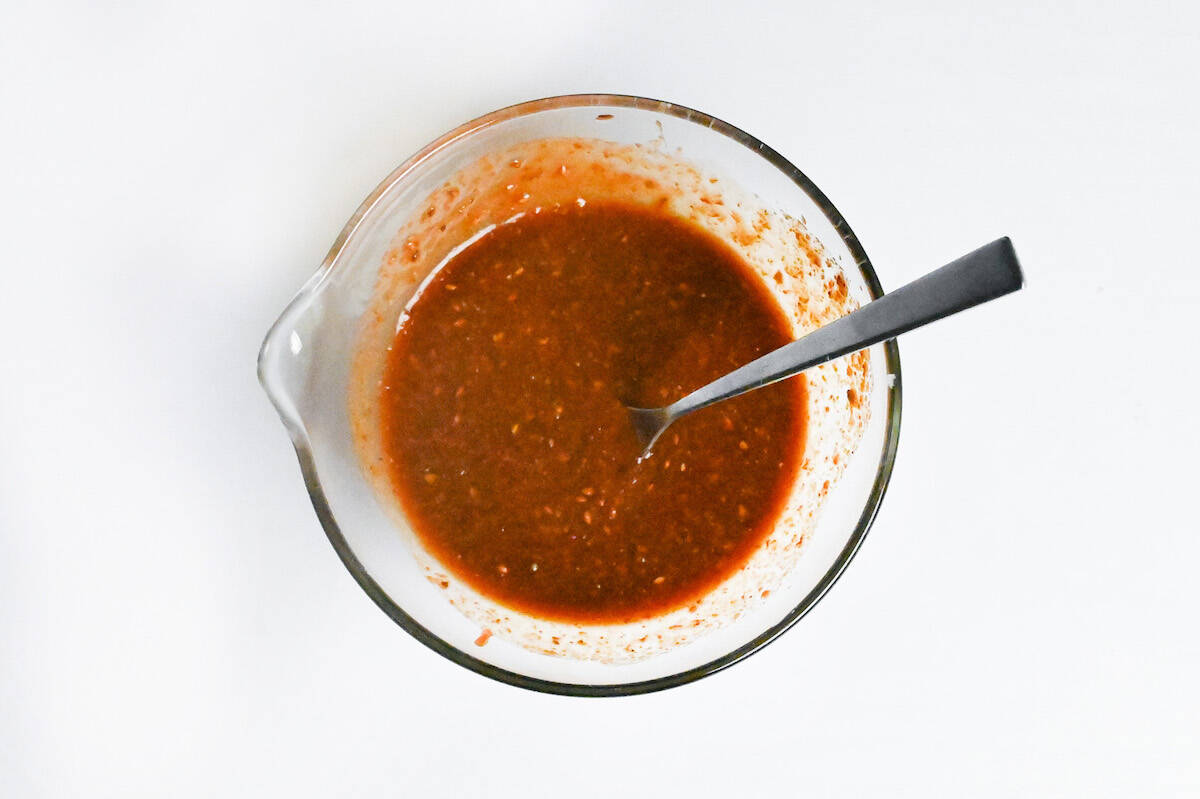
Set this aside for later.
Preheat the oil in a deep fryer or a deep pan/pot to 170 °C (338 °F).
Cut boneless chicken thighs into quarters or sixths, depending on your preference.
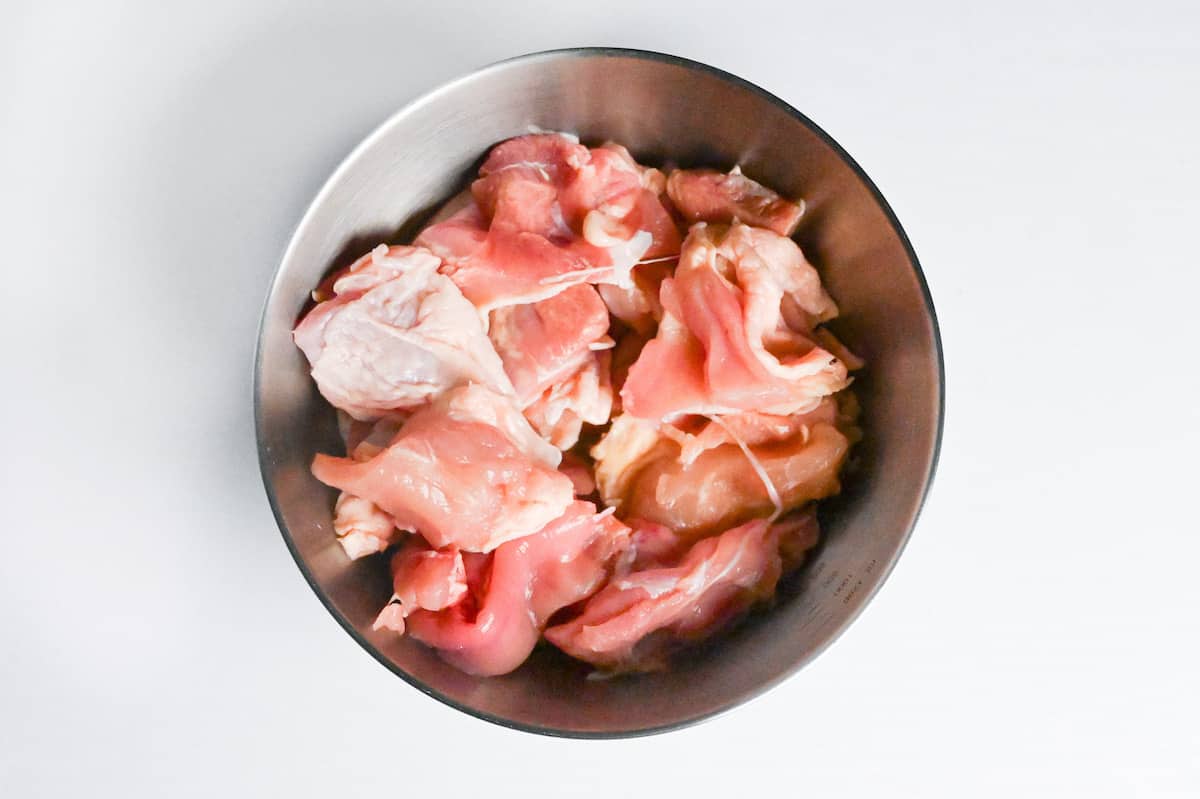
Refer to chicken katsu curry recipe for cutting instructions for chicken breast.
Prepare two plates. One with cake flour and the other with panko breadcrumbs.
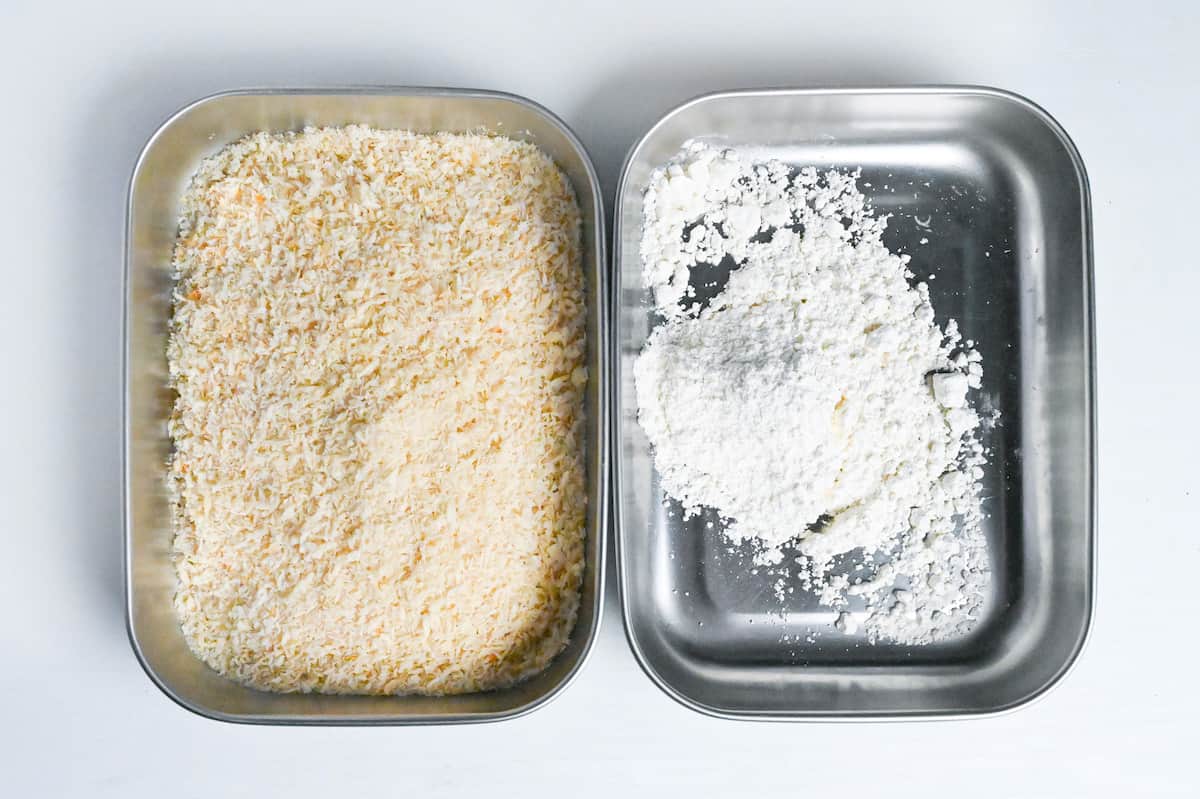
Mix water, eggs, and all-purpose flour in a separate bowl to form a thick batter.

Season the chicken pieces with salt and pepper on both sides. Coat each piece lightly with cake flour.

Dip the floured chicken into the batter, ensuring it’s fully covered. Then, roll it in the panko breadcrumbs until thoroughly coated.
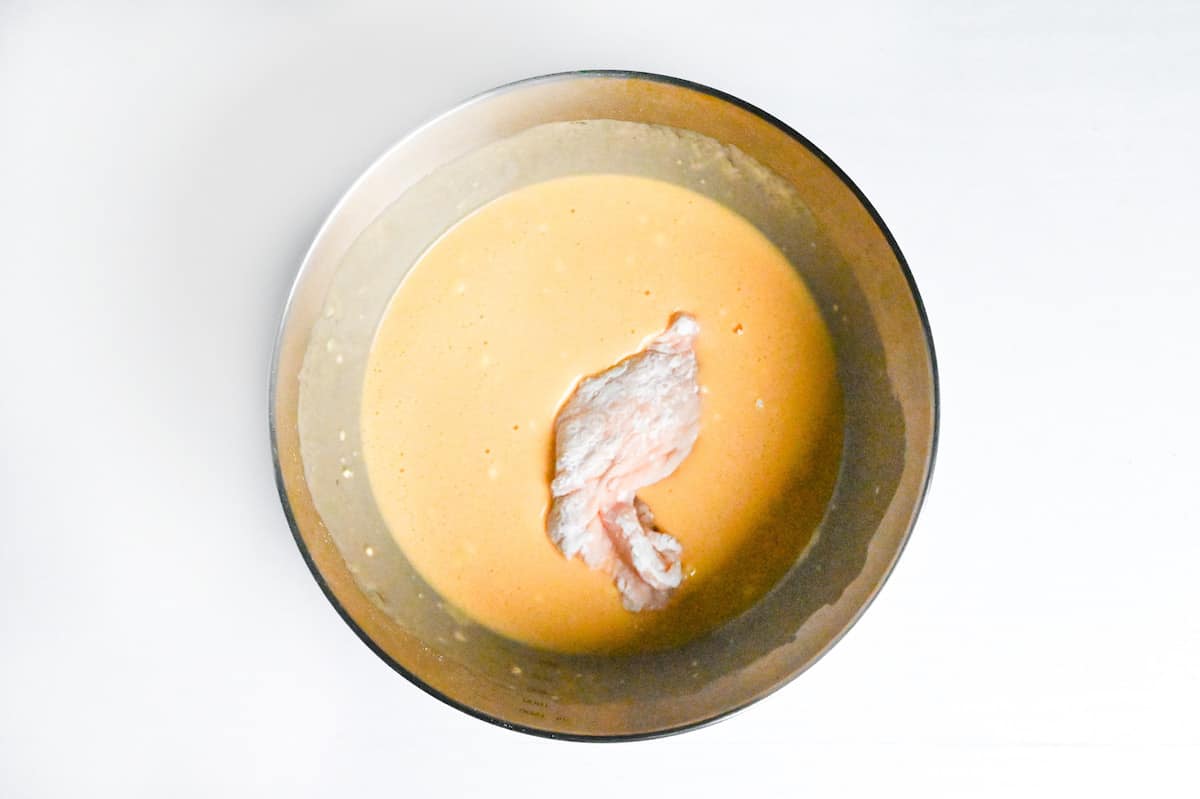

Traditionally, the process involves coating the meat in flour, followed by egg and then panko. However, this technique sometimes leaves gaps where the panko doesn’t stick well for chicken, as the surface is less flat than pork chops.
So, I suggest making a batter using a mixture of egg, flour, and water for a perfectly even coat with an extra thick and crispy texture.
Once the oil is hot, carefully place the coated chicken into the oil. Fry for 3-4 minutes on each side or until they’re crispy and golden brown.
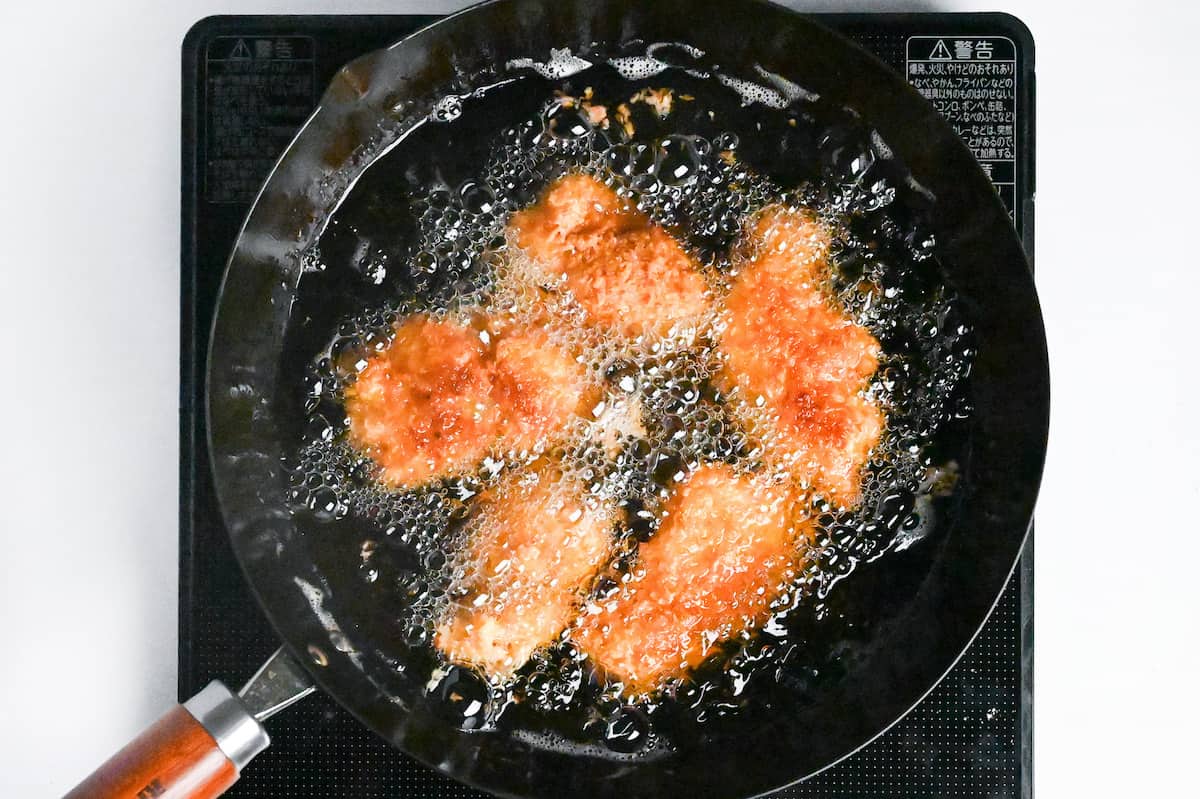
- Test the Oil Temperature: Before you begin frying, determine if the oil is hot enough by dropping in a piece of panko. If it sizzles upon contact, the oil is ready for frying.
- Avoid Disturbing the Katsu: Once the katsu is in the oil, resist the urge to move it around. This helps prevent the panko from detaching. A single flip halfway through is sufficient to ensure even cooking.
- Attune to the Sound of Cooking: Pay attention to the sound of oil. Vigorous bubbling suggests the meat’s moisture is interacting with the hot oil, signaling it’s still cooking. A quieter oil typically indicates the meat is thoroughly cooked.
- Batch Cooking and Storage: Cook a larger quantity than needed, then freeze any leftovers. When you’re ready to enjoy them again, defrost and reheat in the oven or under the grill to revive the katsu’s crispiness. For optimal quality, consume within one month.
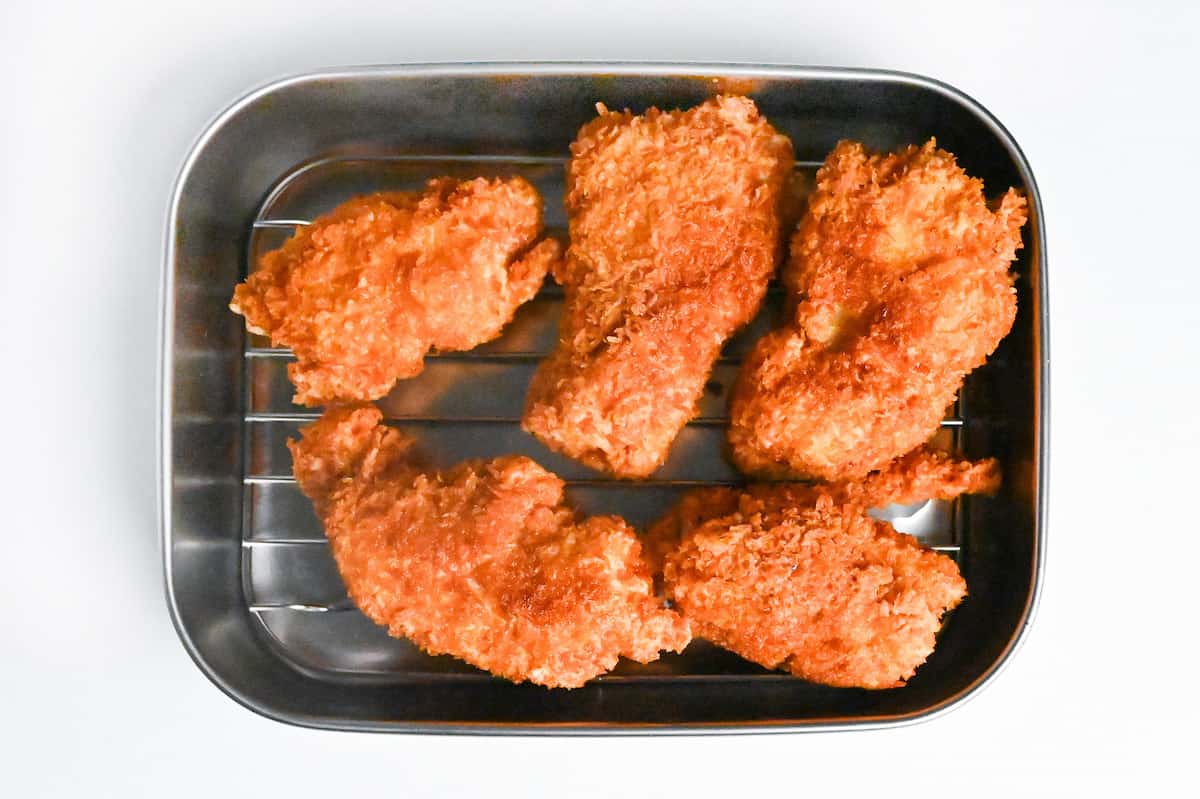
After frying, transfer the chicken katsu to a wire rack to let any excess oil drip off.
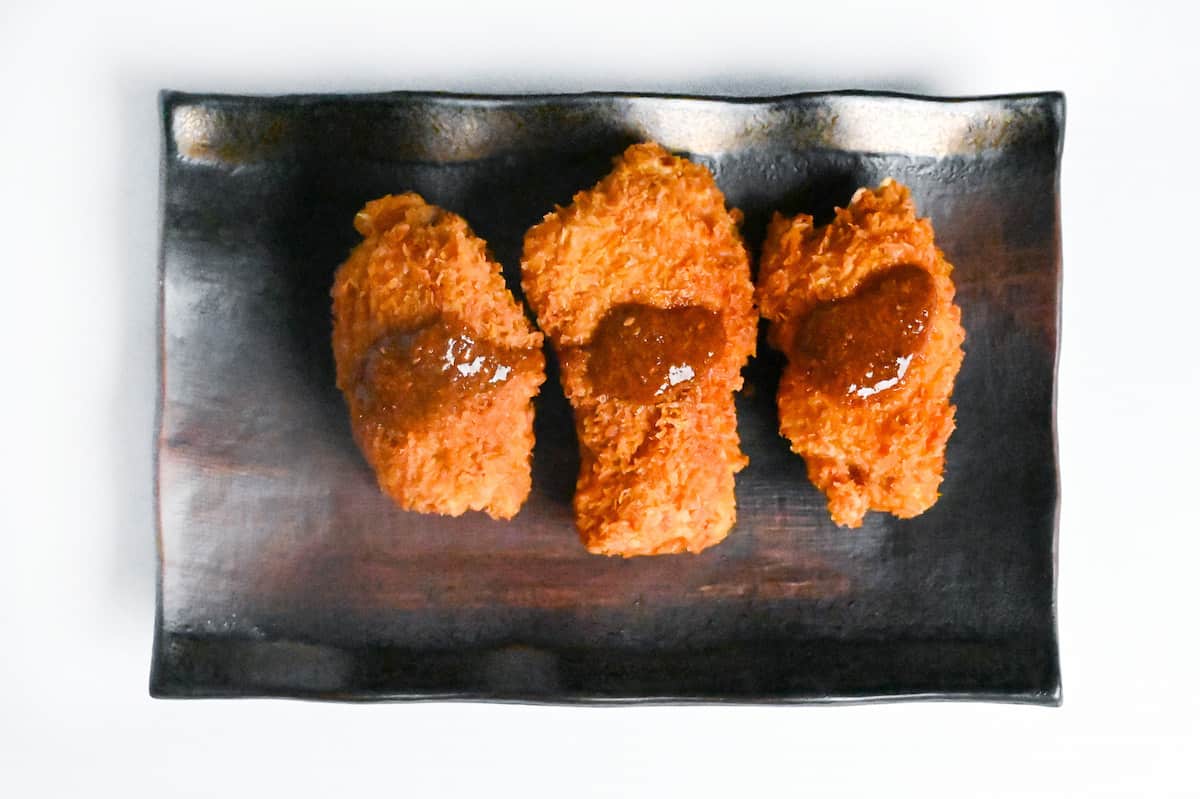
Serve the crispy chicken katsu on a plate and generously drizzle with the homemade sesame sauce.
Jump to Full Recipe Measurements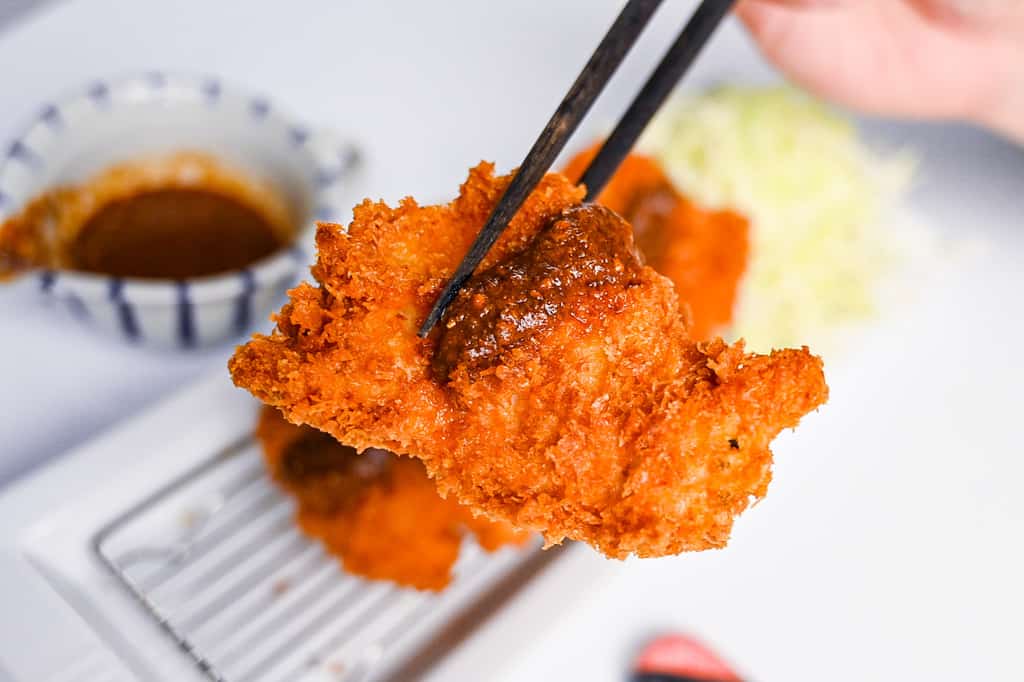
I hope you enjoy this Chicken Katsu recipe! If you try it out, I’d really appreciate it if you could spare a moment to let me know what you thought by giving a review and star rating in the comments below. It’s also helpful to share any adjustments you made to the recipe with our other readers. Thank you!
More Katsu Recipes
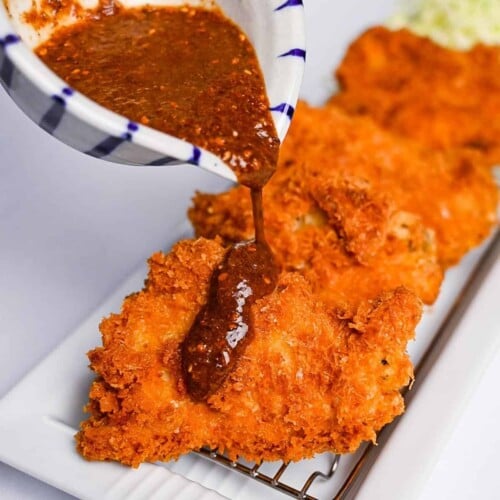
The Ultimate Crispy Chicken Katsu (with homemade sauce)
Equipment
- Japanese-style fryer
- Stainless steel cooking tray with wire rack
Ingredients
Katsu Sauce
- 2 tbsp toasted white sesame seeds
- 2 tsp Japanese soy sauce (koikuchi shoyu)
- 2 tsp Worcestershire sauce
- 1 tbsp tomato ketchup
- 1 tsp sugar
- 4 tsp water
Chicken Katsu
- 600 g boneless chicken thigh skin-on (or chicken breast)
- 1 pinch salt and pepper
- 45 g all-purpose flour for coating
- 100 g panko breadcrumbs
- 100 ml water
- 2 egg
- 100 g all-purpose flour for the batter
- cooking oil for deep frying
My recommended brands of ingredients and seasonings can be found in my Japanese pantry guide.
Can’t find certain Japanese ingredients? See my substitution guide here.
Instructions
Sauce
- Roast 2 tbsp toasted white sesame seeds in a dry frying pan on a medium-high heat for a few minutes until fragrant.

- Grind the roasted sesame seeds with a mortar and pestle.

- Transfer the ground sesame to a bowl and add 2 tsp Japanese soy sauce (koikuchi shoyu), 2 tsp Worcestershire sauce, 1 tbsp tomato ketchup, 1 tsp sugar and 4 tsp water. Mix until well incorporated and set aside for later.

Chicken Katsu
- Start heating the oil to 170 °C (338 °F). While you wait, cut each 600 g boneless chicken thigh into quarters or sixths depending on your preference. (If using chicken breast, refer to my chicken katsu curry recipe for how to cut.)

- Prepare two plates, add the 45 g all-purpose flour to one and 100 g panko breadcrumbs to the other.

- In a bowl, mix 100 ml water, 2 egg and 100 g all-purpose flour to form a thick batter.

- Sprinkle the chicken pieces with 1 pinch salt and pepper on both sides and coat the surface with a thin layer of cake flour.

- Once the oil has finished heating, dip your chicken into the batter.

- Roll in the panko and coat thoroughly before placing them straight into the oil.

- Fry for 3-4 minutes on each side until crispy and golden.

- Transfer to a wire rack and allow any excess oil to drip off.

- Serve the chicken katsu and drizzle with homemade sauce.

- Enjoy!
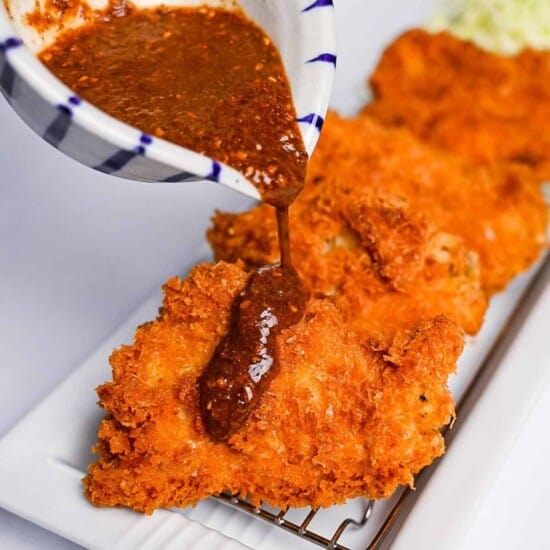



I see two different types of flour
In directions it only says one kind of flour
Im a little confused where the weak flour
Goes
Hi Kim,
The weak flour is for coating the chicken before dipping it in the batter (it helps the batter stick). Although using weak flour is my personal preference for this, it’s not essential and you can use plain flour instead if it’s easier for you.
Thank you for your question, I’ve updated the recipe so that it’s clearer to understand.
Best wishes,
Yuto
Hello Yuto! If I want to save some servings for the future as your recipe suggests, can I freeze them after coating in Panko or do I fry them first?
Thank you!
Hi Jane!
You can freeze them either before or after frying. In an ideal world, it’s tastes better if you freeze them before cooking and then fry from frozen (although they might need to cooked for a little longer after freezing). However freezing them after frying is more convenient since they only need to be reheated.
So in short, either way is fine and depends on whether you want to save time or preserve the quality.
Hope that helps and thank you for trying my recipe!
soooo good, tasted authentic af. thank you for sharing your culture!
Thank you so much, glad you enjoyed the recipe!
Absolutely the best!!
Thank you so much! It means a lot!